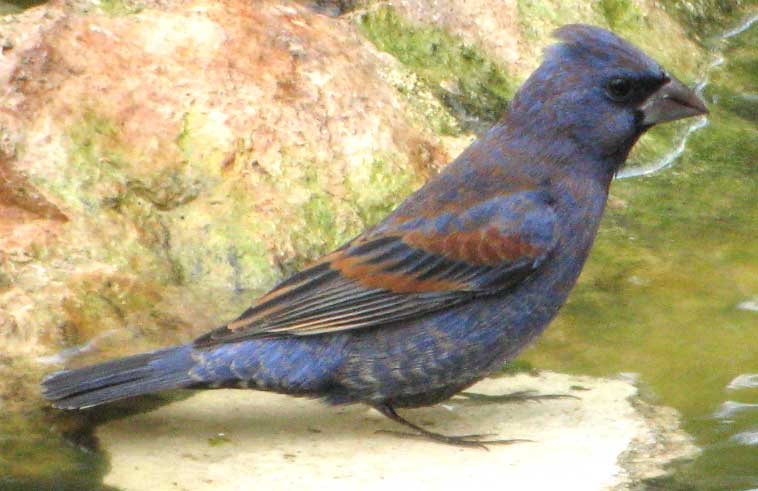Excerpts from Jim Conrad's
Naturalist Newsletter

from the the January 30, 2011 Newsletter issued from Hacienda Chichen Resort beside Chichén Itzá ruins, central Yucatán, MÉXICO
BLUE GROSBEAK OSCILLATIONS
As the dry season intensifies the little birdbath in front of the hut becomes ever more popular. Mostly my visitors are Indigo Buntings, Blue Buntings and Painted Buntings, all a shade over five inches long (13cm). The other day a new blue, thick-beaked bird descended among them, but this one was near seven inches long (17cm) and looked like a St. Bernhard among a pack of street-dogs. In the field you don't notice such a size difference but when they're all in a birdbath together it's striking.
It was a Blue Grosbeak, recognized not only by its larger size but also by its conspicuous brown wingbars. The species is spending its winter here, biding its time until returning up North to nest in approximately the US's southern half. It's shown above.
Even more eye-catching than this bird's size, however, was the strange wavy pattern covering much of his body. At first I thought the oscillations were caused by reflections off the water's wavy surface, but a closer look showed that the pattern resulted from individual blue feathers having pale or brownish tips. Howell in his wonderful A Guide to the Birds of Mexico and Northern Central America makes clear what's happening when he describes the adult male's overall blue plumage as "extensively tipped brown in fresh basic."
"Basic" used by an ornithologist talking about feathers refers to the plumage of a bird during the winter or non-breeding season. Many birders up North even if they're very familiar with Blue Grosbeaks may never have seen this interesting effect.
Blue Grosbeaks winter from Mexico south to Costa Rica.